Five new rules of Indian elections
As the counting of votes begins for the closely-watched Assembly elections in four states - Delhi, Madhya Pradesh, Rajasthan and Chhattisgarh - we take a look at the five new factors that have emerged in Indian elections.
-
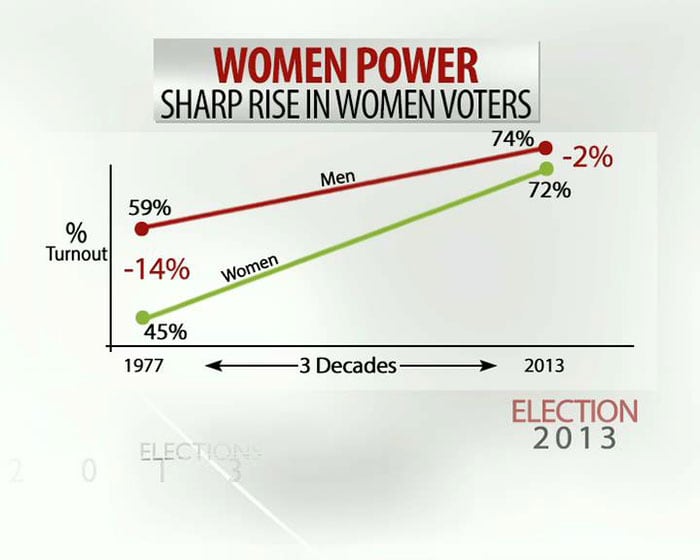 As the counting of votes begins for the closely-watched Assembly elections in four states - Delhi, Madhya Pradesh, Rajasthan and Chhattisgarh - we take a look at the five new factors that have emerged in Indian elections.
As the counting of votes begins for the closely-watched Assembly elections in four states - Delhi, Madhya Pradesh, Rajasthan and Chhattisgarh - we take a look at the five new factors that have emerged in Indian elections.
72 per cent of women vote now as compared to 45 per cent three decades ago. Now, they are only 2 per cent behind men. -
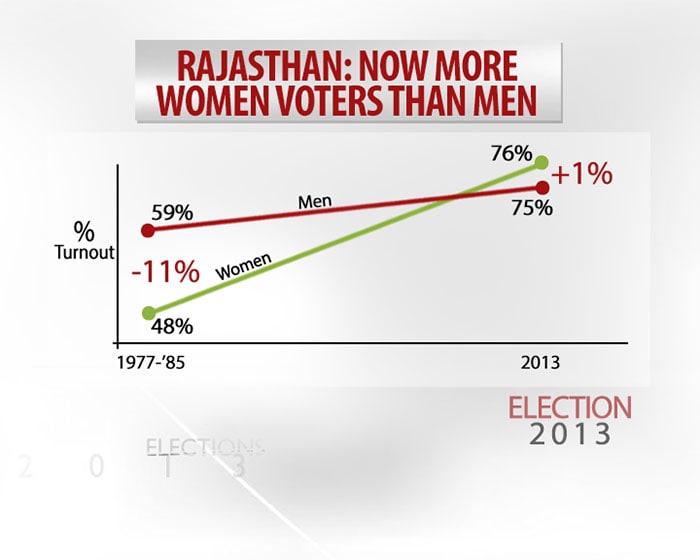 In Rajasthan, more women voted than men in the current Assembly election which is 1% higher than before.
In Rajasthan, more women voted than men in the current Assembly election which is 1% higher than before. -
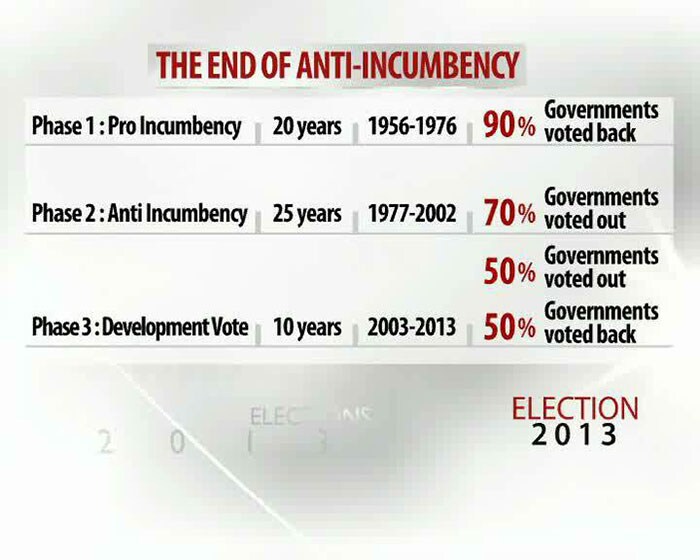 If you deliver, you are voted back. The development vote has replaced the anti-incumbency vote. In last 10 years, 50 per cent of governments were voted out. From 1997-2002, 70 per cent of governments were voted out.
If you deliver, you are voted back. The development vote has replaced the anti-incumbency vote. In last 10 years, 50 per cent of governments were voted out. From 1997-2002, 70 per cent of governments were voted out. -
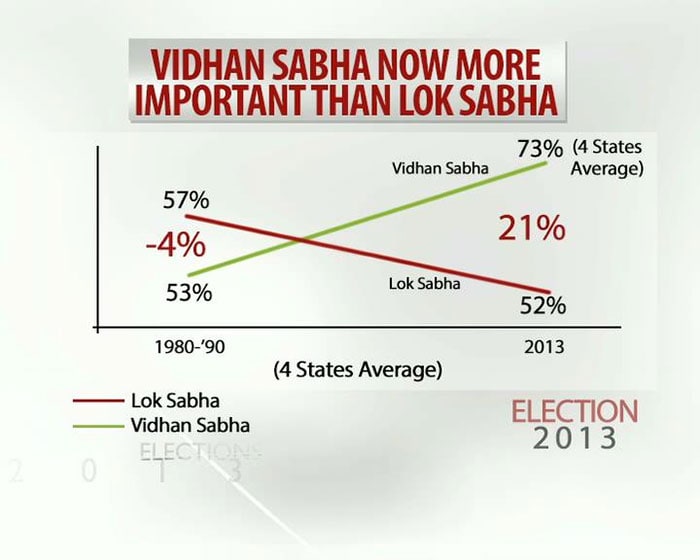 In the 80s and 90s, 57 per cent voter turnout was recorded for Lok Sabha, while for Vidhan Sabha, it was 53 per cent. This time, the turnout for state assembly elections was 20 per cent higher than for the last national elections in 2009.
In the 80s and 90s, 57 per cent voter turnout was recorded for Lok Sabha, while for Vidhan Sabha, it was 53 per cent. This time, the turnout for state assembly elections was 20 per cent higher than for the last national elections in 2009. -
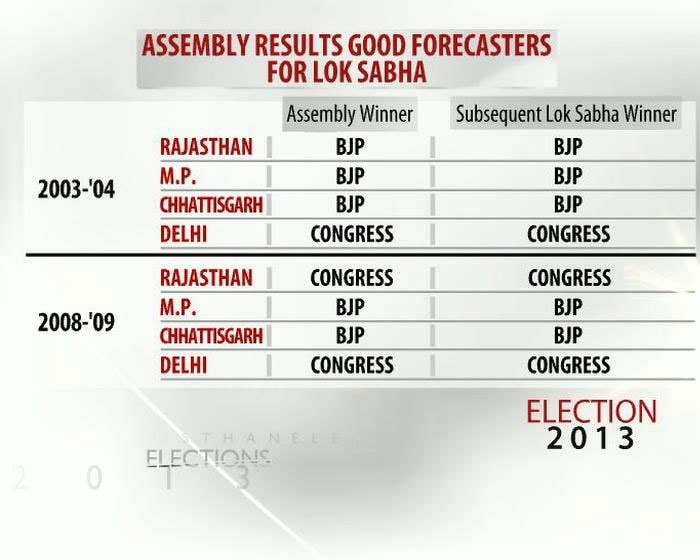 Whoever wins the state elections can be pretty sure of winning parliamentary elections in the same state.
Whoever wins the state elections can be pretty sure of winning parliamentary elections in the same state. -
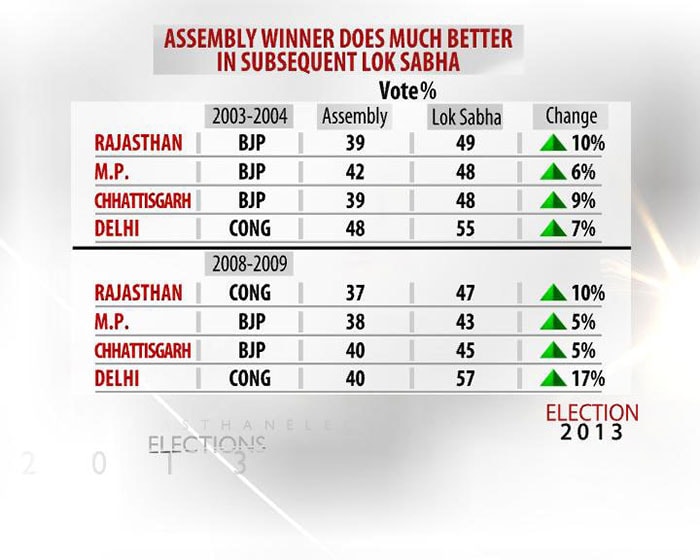 The above chart shows the percentage change in the vote margin by which the party repeated its win in the Lok Sabha elections.
The above chart shows the percentage change in the vote margin by which the party repeated its win in the Lok Sabha elections. -
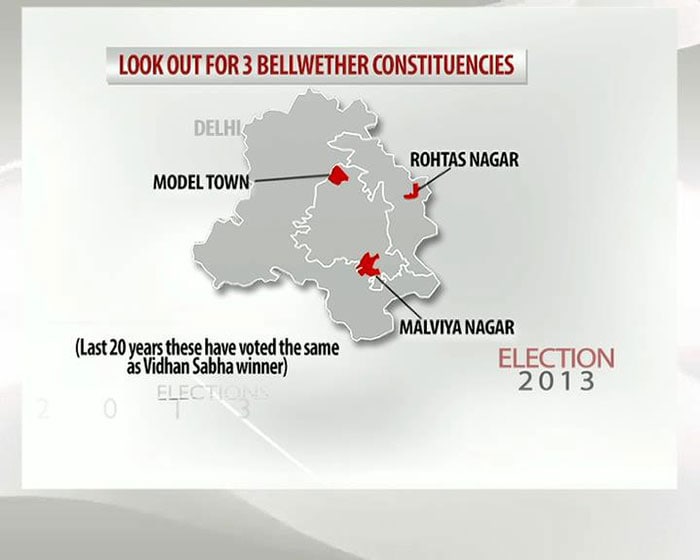 In Delhi, Model Town, Rohtas Nagar, Malviya Nagar have voted the same for assembly elections and national elections over last 20 years. Whoever wins Assembly seat here, wins the parliamentary seat.
In Delhi, Model Town, Rohtas Nagar, Malviya Nagar have voted the same for assembly elections and national elections over last 20 years. Whoever wins Assembly seat here, wins the parliamentary seat. -
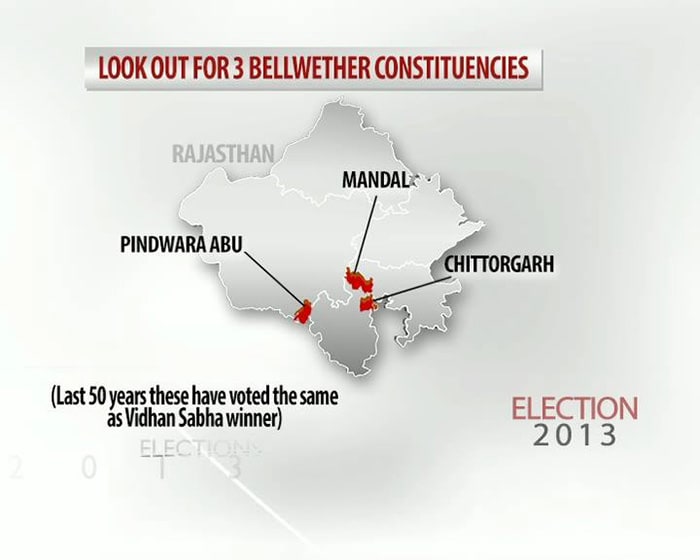 For the last 50 years, the three constituencies of Mandal, Pindwara Abu and Chittorgarh in Rajasthan have voted the same for assembly elections and national elections.
For the last 50 years, the three constituencies of Mandal, Pindwara Abu and Chittorgarh in Rajasthan have voted the same for assembly elections and national elections. -
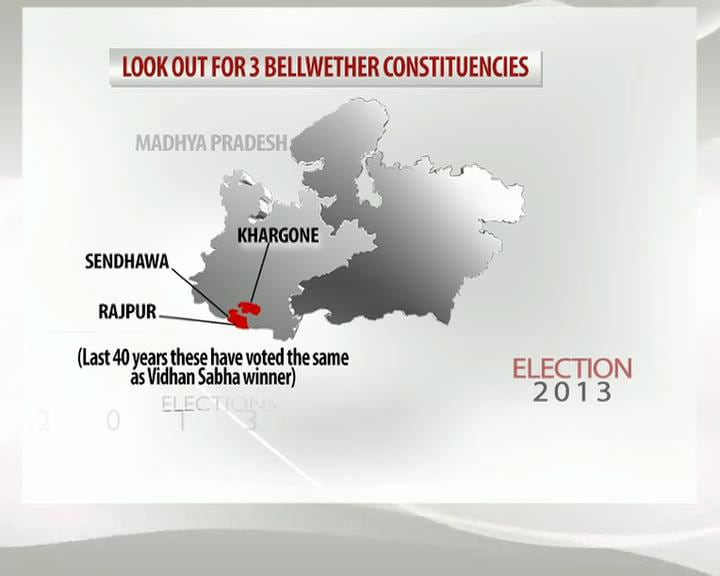 For the last 40 years, Sendhawa, Khargone and Rajpur in Madhya Pradesh have proved to be bellwether constituencies. The party that wins these seats also wins the parliamentary seat.
For the last 40 years, Sendhawa, Khargone and Rajpur in Madhya Pradesh have proved to be bellwether constituencies. The party that wins these seats also wins the parliamentary seat.
Advertisement
Advertisement
Advertisement
